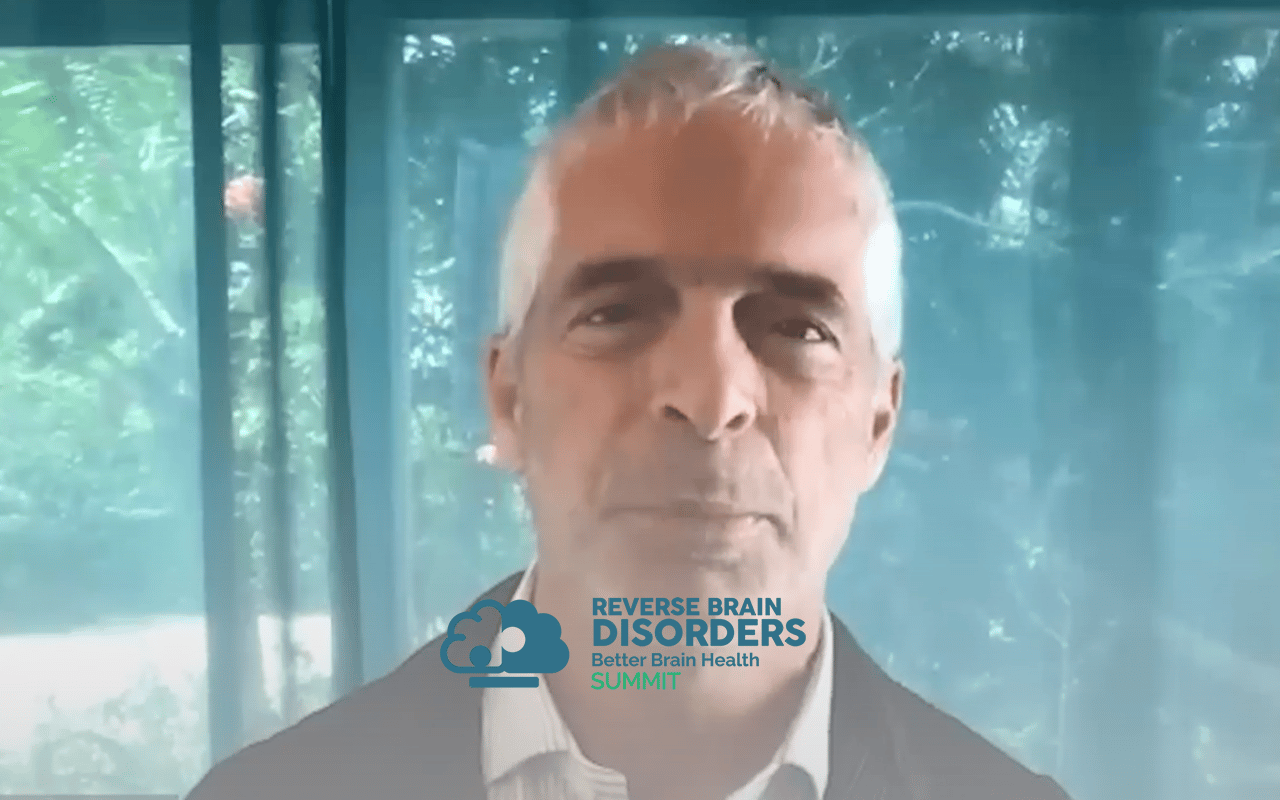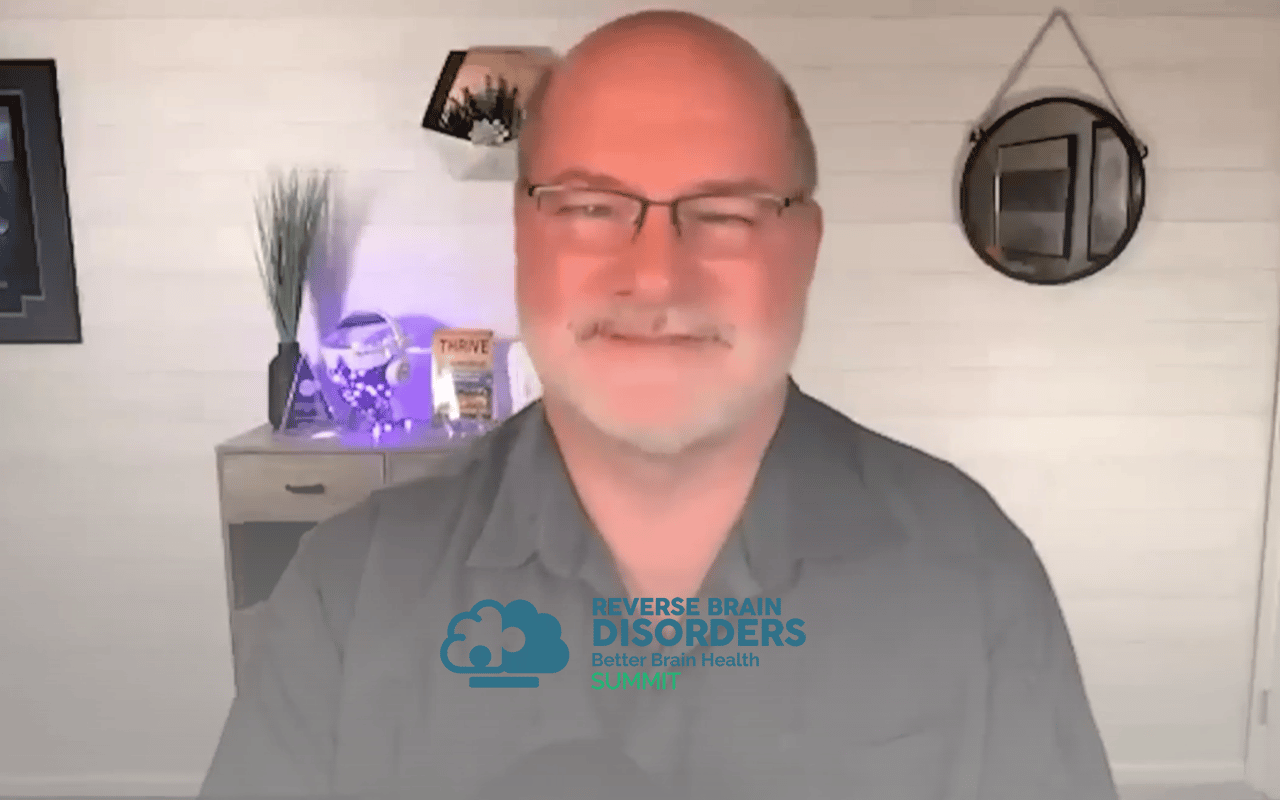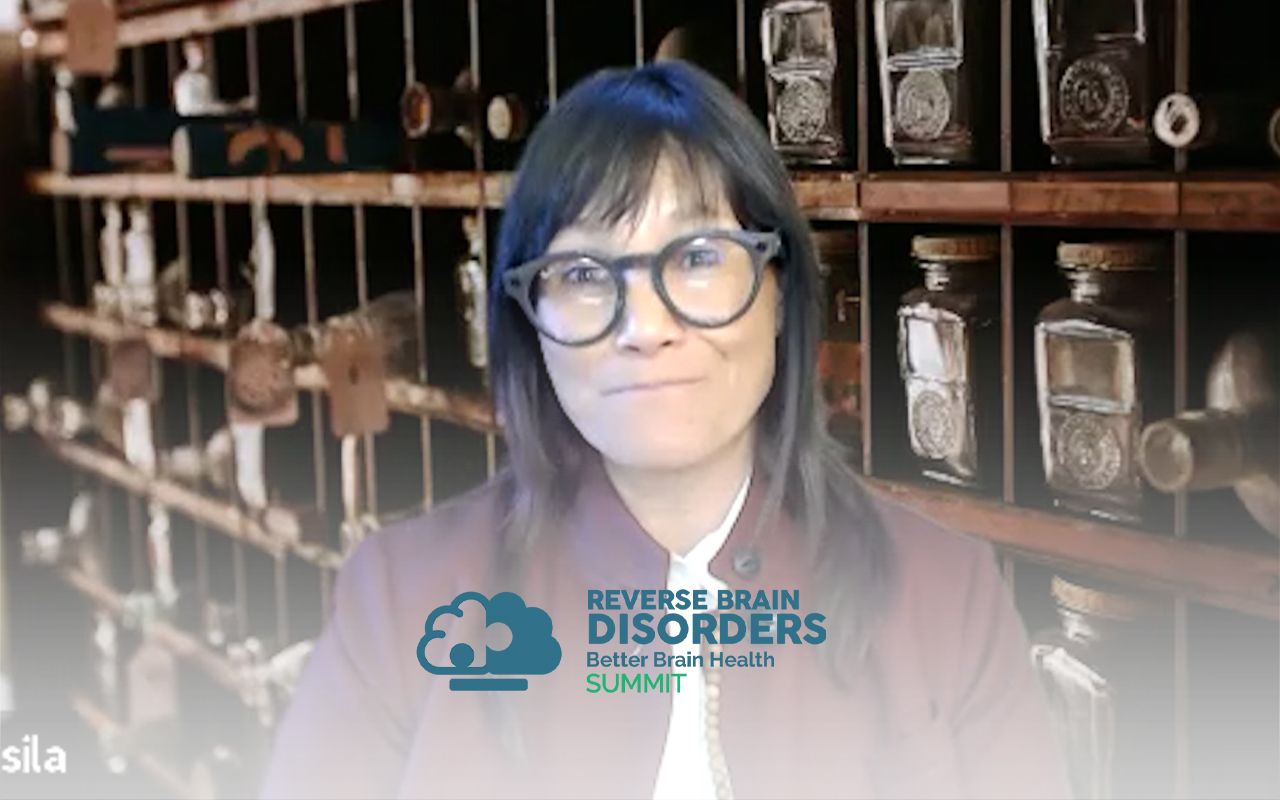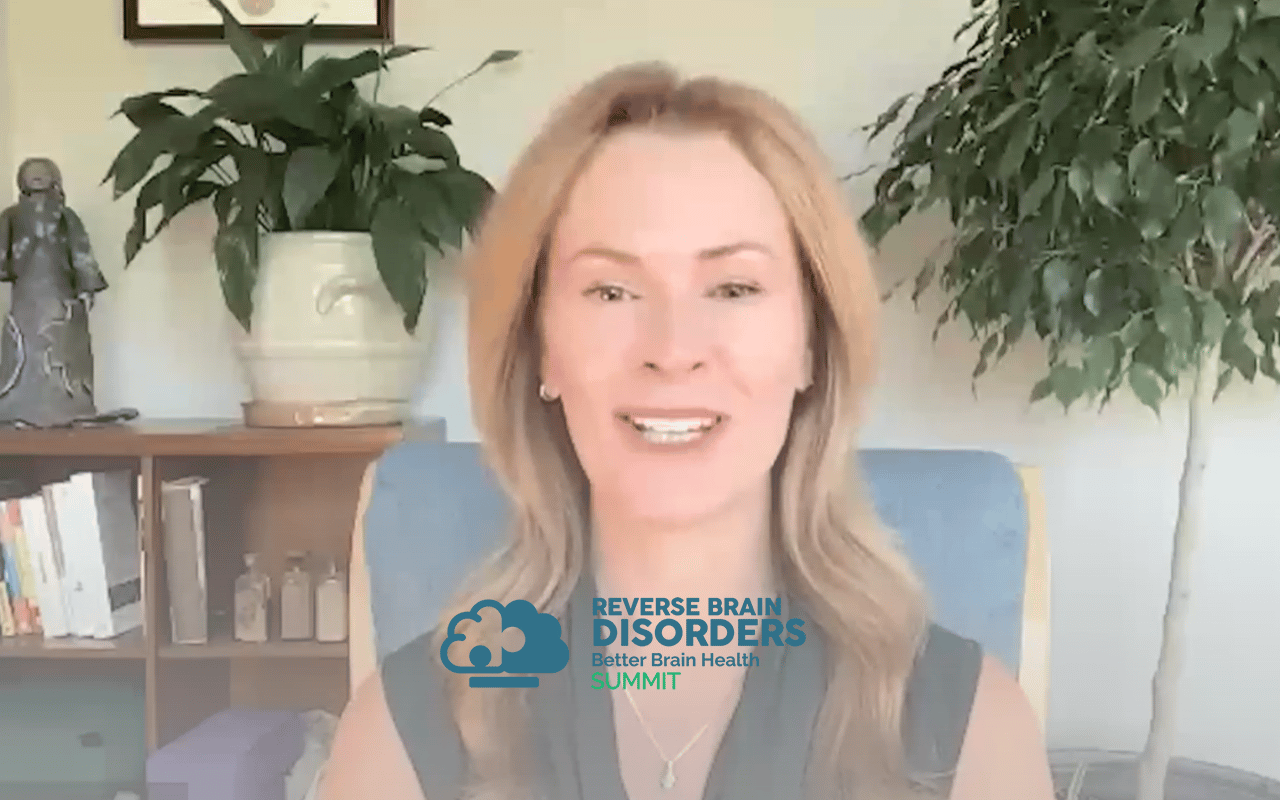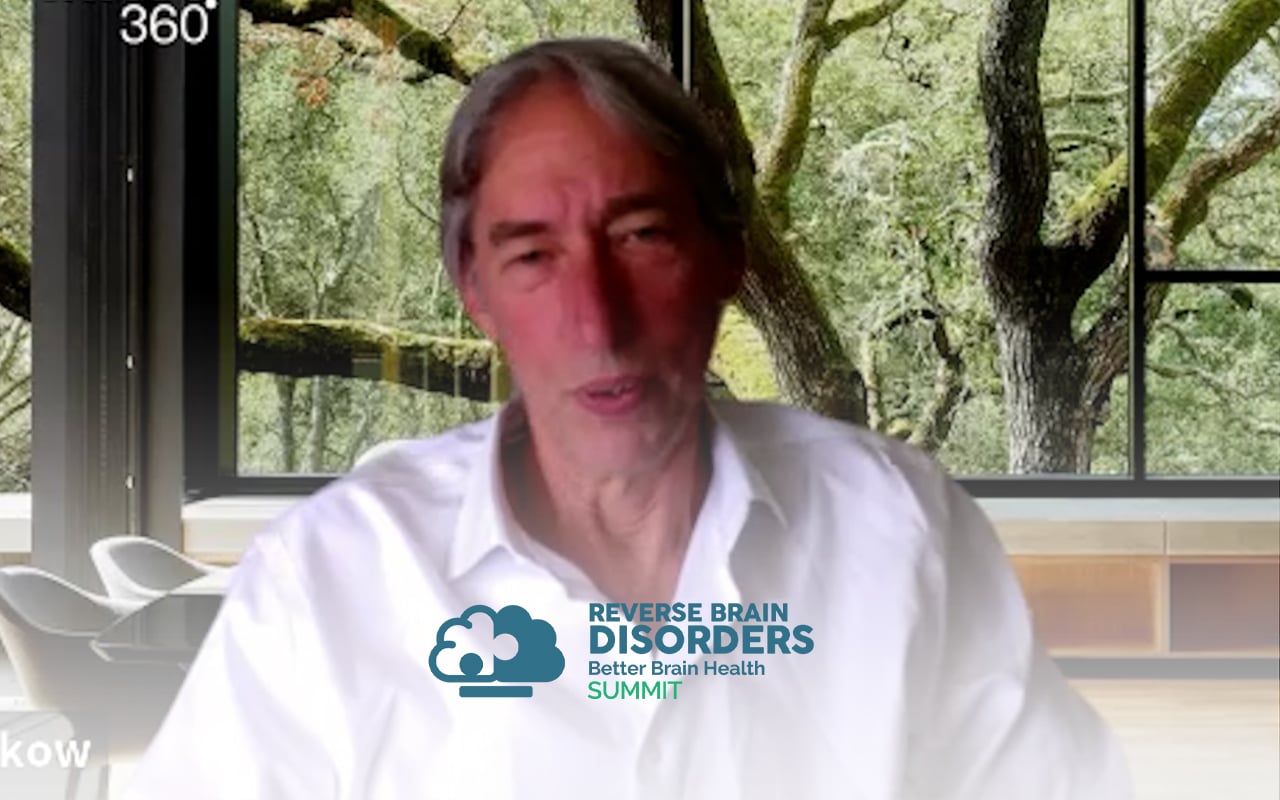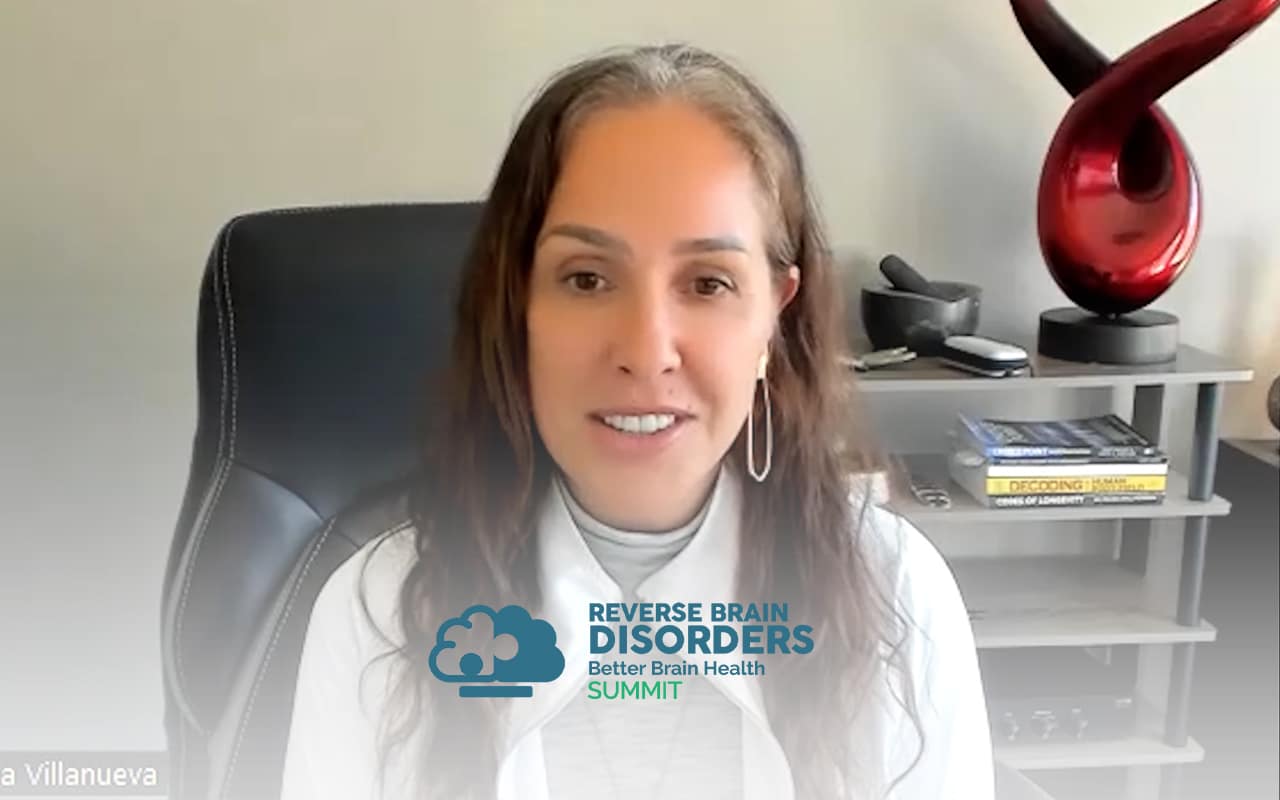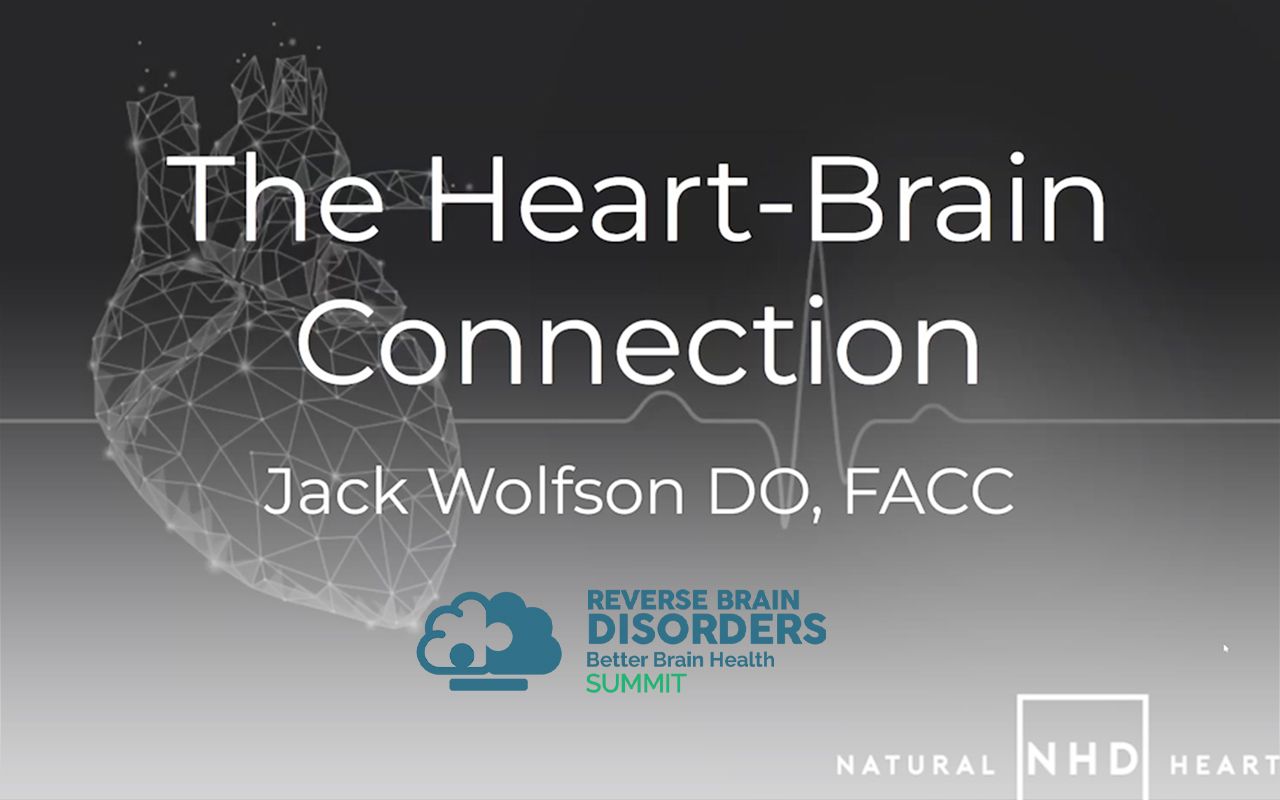Join the discussion below

Dr. Ruan is the Founder and CEO of Texas Center for Lifestyle Medicine. He devotes his career in practicing and building systems that allow for efficient delivery of healthcare. He is a board certified internal medicine physician but also have advised with companies to improve their workflow, company culture, marketing,... Read More

Tom O’Bryan, DC, CCN, DABCN, CIFM
Dr. O’Bryan is considered a ‘Sherlock Holmes’ for chronic disease and teaches that recognizing and addressing the underlying mechanisms that activate an immune response is the map to the highway toward better health. He holds teaching Faculty positions with the Institute for Functional Medicine and the National University of Health... Read More
- We discuss root causes of dementia, ADHD, and how to fix your brain
Cheng Ruan, MD
We’re gonna talk about the Canary in the coal mine, which is this concept of how environmental factors really played a huge role in brain and mental health. It’s massive, massive role. It’s really not talked about a whole lot, but there’s no one better to talk about it than Dr. Tom O’Bryan. Dr. O’Brian is considered a Sherlock Holmes for chronic disease and teaches, recognizing and addressing the underlying mechanisms that really activate an immune response for the brain. He holds faculty positions at the Institute for Functional Medicine and the National Diversity of Sciences and is trained and certified tens of thousands of practitioners around the world. He’s such a great friend of mine that he actually came down in 2017 and talked about this, this topic of environmental factors in brain health, at the gut brain connection uh summit that we have for doctors back in 2017, which is where we met in person. And so I’m super excited to introduce Dr. Tom O’Brian on. We’re gonna get into some really interesting topics very shortly and I hope you enjoyed this segment. So, welcome to the summit. I’m super happy to have you and nice seeing you again.
Tom O’Bryan, DC, CCN, DABCN, CIFM
Nice seeing you too, and thanks, it’s a real pleasure to be here. Such a critical topic.
Cheng Ruan, MD
It sure is. I, you know, a few years ago, you were very kind enough to come down to educate me and my doctors at the functional medicine grand rounds here in Houston, Texas and the Texas Medical center and at that time and I’ll never forget the slides that you actually put up. And you talk about sort of this canary in a coal mine. And the imagery really stuck with me ever since then. And then when I read a book, I understood what you really meant by that and there’s really a canary in the coal mine philosophy that would, would like for you to kind of talk about to our listeners. So let’s talk about that for a second. What is the canary in the coal mine? And how does it really affect brain health?
Tom O’Bryan, DC, CCN, DABCN, CIFM
The phrase comes from back in the 1800s, Coal miners used to take the canary in a cage down into the coal mine with them and they had a little, a couple of candles there for the bird and they just listen to it sing and if it stopped singing, someone went over to check and if the canary had fallen over dead in the cage, some, they blew a whistle and everyone immediately dropped what they were doing and got out of the mine because it meant there was a methane leak or a carbon monoxide leak and Canaries are much more sensitive than humans to their, their tolerance is very, very low, to those gasses. So the, the canary in a coal mine is a phrase that means the early indicators before you have symptoms. The indicators when you’re stuck in the, I-feel-fine syndrome, I feel fine. There’s nothing wrong here. Well, in reality, there is. It just hasn’t accumulated enough tissue damage yet to cause obvious visible experiential brain dysfunction.
Cheng Ruan, MD
So this Canary in a coal mine is really something that we should kind of pay attention to because there are, you know, I feel like there are symptoms of early brain issues, commented issues, but I feel like we’re kind of taught to kind of shove it aside. Maybe that’s a stigma behind mental and brain health, right? And so yeah, and I feel like we just have to keep pushing and pushing, pushing and going and going and going until one day we get diagnosed with this disorder that someone can put a diagnosis too. And it’s been happening for years.
Tom O’Bryan, DC, CCN, DABCN, CIFM
Yeah, that’s exactly right. You know, and we joke about it. I mean, everyone knows someone that had a heart attack and survived and they changed their diet. They started exercising, they look better than they’ve looked in years. Most of us know someone who was diagnosed with cancer and went through the recommended protocols, put it in remission and they’re doing great. No one knows anyone diagnosed with a brain disorder that’s doing great and it terrifies us. So we joke about it. We giggle and say, oh, I’m getting older. I don’t remember the way I used to ha ha ha, well, how old are you? I’m 36. No, that’s not supposed to happen, that there’s a problem going on that just hasn’t killed off enough tissue yet to be obvious.
Cheng Ruan, MD
Well, 36 is a pretty young age. That’s younger than me. So the when does bring deterioration actually start happening?
Tom O’Bryan, DC, CCN, DABCN, CIFM
It begins when you lose tolerance to whatever the irritating agent is you’re being exposed to. For example, we know that we’re in the topic of gluten and wheat, every single human has a negative reaction when it comes into the small intestine, but not every single human’s immune system is fighting wheat that we have a tolerance for some of this. But when you cross the line of tolerance, you know, immune system is the armed forces in your body. It’s there to protect you. There’s an army and a Navy and Air force and the marines and the Coast Guard, we call them, IGA IGG IGE IGM. They’re there to protect you. So when your immune system gets activated to protect you, that’s when you’ve crossed the line of tolerance. And when it gets activated and what happens in this mechanism with brain deterioration is that you start getting collateral damage from the activation of the immune system trying to protect you.
Cheng Ruan, MD
But the activation of the immune system can create symptoms and disorders that we put into this bucket. You know, whether we call it Alzheimer’s or Parkinson’s syndrome or whatever it is we call it, right. Mental psychosis, immune system is doing something and that’s reacting to our environment. So, you know, you wrote this wonderful book, ‘You Can Fix Your Brain.’ When did you write that? What year did you write that? 2018? 2017?
Tom O’Bryan, DC, CCN, DABCN, CIFM
2016.
Cheng Ruan, MD
2016? And so in the book and it’s funny that we’re talking about the book is my eight year old who can read very well now can actually read the book. She’s been, that book has been her room for a long time because she likes the pretty brain pictures on it. There’s different colors on it.
Tom O’Bryan, DC, CCN, DABCN, CIFM
And I argued, I argued for two weeks with road dale for the cover. For two weeks on the title and the cover, but that’s what I wanted. So I’m glad that thank you for that. That makes me feel good that the eight year old like,
Cheng Ruan, MD
Yeah, well she discovered when she was five, it was in the backseat of my car and she’s going through it and then, and she’s actually in the other room right now and she’s going through it. And one of the things that she pointed out to me, is like the environment and she really cares about the environment. She’s learning about it right now, right? Is there pollution in different places. There’s mold. She’s learning about mold in her elementary school, which is very interesting. I never learned that in my school and about how, what are the symptoms of mold issues and memory issues and attention issues is she’s actually learning about that and at elementary school, like what? This is great. And she referenced in your book and I was just laughing at this is something that which I would have learned, you know, as a doctor, which I did not know about right is that we’re the product of our environment with the canary in the coal mine, right? And that there’s an our immune system and even though they’re supposed to like support us and protect us, but the downside is there are symptoms that kind of go along with the immune response. So how do we, as just people, not, not me as a doctor, but just how do we all of us accommodate for the fact that we’re kind of living in this toxic world and what toxin should we really look for?
Tom O’Bryan, DC, CCN, DABCN, CIFM
Oh, that’s a million dollar question. That’s a PhD thesis. That question. That’s, I don’t even know where to start the well, the most common sort. Well, let’s back up. 14 of the top 15 causes of death in the world today are chronic inflammatory diseases, That the body is on fire. There’s inflammation. 14 of the 15, which means and the only one that’s not is unintentional injuries. So when we go down, whenever that is hopefully a long time from now, but whenever it is, it’s gonna be from a chronic inflammatory disease. So when we understand that big picture then the question and the operating principle in life is how do I reduce the amount of inflammation in my body? So the question is where is the inflammation coming from? And to answer that you have to understand what is inflammation, inflammation is your immune system trying to protect you from something trying to protect you. It’s not an immune system that’s gone crazy. Rheumatoid arthritis is not a mistake of the immune system. MS, Lupus. It doesn’t matter what, celiac, it doesn’t matter what autoimmune disease and the way that we learned about this was through celiac because it’s the one autoimmune disease. There’s no question. We understand what the environmental trigger is exclusion. And so the premise is you’ve got to get gluten out of your diet, you can’t have even the tiniest little amount if you’ve been diagnosed with celiac. Well that same concept of envy, environmental trickery, activating an inflammatory response trying to protect you is true with most every autoimmune disease they look at. So the question is what are the environmental triggers our world is so toxic today?
I mean that’s a wonderful, wonderful question and it’s my belief and this is my opinion. Although there’s a lot of good evidence that kind of feeds into it. That the reason that every autoimmune disease today is going up 4-9% a year, is because of the amount of these environmental toxins that were being exposed to. And we accumulate. So for the doctors out there, there’s two level of environmental triggers that you have to deal with. It’s the patients outside world and that’s what’s on the end of their fork and what they’re breathing primarily and the cosmetics they put on their skin, that’s the outside world, but also the inside world. How much of these toxins have we been accumulating in our body? And we all know about heavy metal poisoning and when mercury or lead accumulates in our body. Well that’s true with the organophosphates, it’s true with petroleum residue, they all may accumulate in our body, which then activates the immune system trying to protect you because you’ve crossed the line of tolerance with the amount of pesticides that are in your body now.
Cheng Ruan, MD
You know, the when you divide it into sort of the outside world and the inside world, I feel like there’s another part of the inside world is genetics. Right? So a lot of people say, hey, my mom had it, my grandma had it. I’m doomed to have it. Like, what do you say about that?
Tom O’Bryan, DC, CCN, DABCN, CIFM
Oh your genes don’t determine. Mrs. patient, when you pull it a chain, the chain breaks at the weakest link, it’s at one end the middle the other end is your heart, your brain, your liver, your kidneys, wherever your genetic weak link is. Now, that weak link is determined by your genes and by antecedents how you’ve lived your life, for example you eat tuna fish 23 times a week, every week you got mercury poisoning. That’s just how it is in today’s world, tuna has mercury in it. So that’s the antecedent. So your genes. The way I talk with doctors on this, you know doc, don’t ever say that you’re going to turn off the genes or turn on the, genes don’t turn on and off their functioning all the time. They operate on a dimmer switch. And what you wanna do is dim down the genes of inflammation and turn up the genes of anti inflammation. So yes, you have a family history of diabetes. That just means that’s a weak link in your chain. So don’t pull on the chain so hard. Well what does that mean? It means you learn how to keep your blood sugar balance and not overtax your particular system and its abilities. Right?
Cheng Ruan, MD
So the genes can predispose to disease. But not yeah. Not at the mercy of these genes. Right. Which is which is great for me.
Tom O’Bryan, DC, CCN, DABCN, CIFM
You know I love my APOE4 patients that’s the gene what? Yeah that’s one of the genes that make them vulnerable to Alzheimer’s and when we identify that, I sit down with them and I say this, “Now I’ve got to read to you from the book of life this is the weak link in your chain. If you don’t stop pulling on the chain so hard, it’s very likely your last 15, 20 years of life are gonna be hell and it’s gonna scare you quite a bit” and you know, I’ve got their attention then. And so then the goal is every year with our APOE4, patients, they redo their inflammatory marker tests to make sure they’re keeping their levels of inflammation down they under. And it doesn’t matter how they feel. It doesn’t matter because you don’t feel bad until you’ve killed off so much tissue. It just can’t function normally anymore. So how they feel doesn’t matter for this topic really. It’s monitoring. It’s like the dashboard on your car. You know, there’s two ways to measure the temperature and the engine of your car. In most cars, the hot light comes on the dashboard. When that happens, it’s too late, pull over the engine is about to blow up in other cars. They have a temperature gauge and you can see the game age slowly start climbing into the red zone, which gives you a chance to do something about it before it overheats in our bodies. Those are called biomarkers. And there are tests that you can do that are biomarkers that tell you your brain’s on fire right now. Well, I feel fine. It doesn’t matter how you feel your brain’s on fire, killing off brain cells and this will go on for 20 to 30 years before you ever get a diagnosis of Mild Alzheimer’s
Cheng Ruan, MD
And so, if we separate looking at, for example, biomarkers or labs into two different categories. There’s one set of labs where it is looking at genetics, like A Protein E4, E3, whatever. And there’s another biomarker which can go up and down like a dimmer switch you’re talking about, right? And these are the inflammatory factors into lukins, the TNF alpha and stuff like that as well. Now, a lot of doctors don’t necessarily look for these things because they don’t necessarily correlate with the disease at that time. But this is sort of like the smoldering gun effect. Right? Where there’s something to always there that’s, that’s there that we have to sort of identify. So what are, what are some of the labs that you progression of disease?
Tom O’Bryan, DC, CCN, DABCN, CIFM
Oh, there’s just there’s a classic, I mean, we, I personally got so excited when this laboratory open, you know, we have to understand in 1990 when cell phones were first coming out and you had a pack on your shoulder for the battery, you know, and way back in those days, if I had told you that, you know, 2025 years, I’m gonna hold this little black thing in my hand. And if I push on a couple of buttons here on this little black thing, I can tell you within five seconds that the air particulate matter in Spazio, Italy right now is nine. That’s really good. It’s a good day to go outside and exercise. But in Chicago is 54. That’s a warning meaning don’t go running today outside because there’s a lot of toxic pollutants in the air. And if I had told you that and that I’ve got the encyclopedia of the world in my hand and I can’t pull any information I want in five seconds you would have thought I was watching too much Star Trek. The same thing has happened in laboratory medicine where the technology has improved dramatically and in medicine is called sensitivity and specificity of the test. And doctors don’t know that.
The sensitivity and specificity of most of the tests they do is somewhere in the 70% to mid 80 percentile range, 70-85% meaning it’s wrong. 1-3 out of 10 times it’s completely wrong. And so I challenge doctors to do this. I said it’s gonna cost you a little bit of money. But next time you do a blood draw on your patient, take an extra tube of blood in the same blood draw, label it with a fake name, order the same tests end in both tubes of blood. With order the same tests and you have to pay for the second one. You can’t build their insurance or charge the patient. But then when the results come back you see how accurate your laboratory is. And its jaw dropping. It’s really jaw dropping when you see this. And I learned this back in 1998, 1999. And I was so despondent. You know, I hadn’t because our evidence to show why a patient should take a particular action was not accurate often. And doctors don’t know when it’s accurate when it’s not. Then mayo clinic published a paper in January of 2016, Joe Murray at Mayo, who is one of the most respected gastroenterologists in the world about Celiac disease. He’s one of what I call the four horsemen.
There are four of them. They’re just the very best. And Joe Murray is one of them. He and his team published this paper about a new laboratory technology and they referred it’s called silicone chip technology and they referred to it and their words a new era in laboratory medicine because now the tests are 97-100% sensitive and specific every single time technology improves. But hospitals don’t know this and use these tests. There’s so much politics in medicine, you know, and doctors sometimes have their hands tied as to what labs they can order by what’s being supplied to them. So we started using these tests and it was jaw dropping. And I did three patients with separate blood draws and or a second blood draw and paid for it myself. And it was right on the money within 3 to 5% change, which is very acceptable in medicine and after three I said, okay, that’s enough that validates for me that they are 97 to 100% accurate and sensitive.
So silicon chip technology has given us a test called the Neural Zoomer Plus. And the Neural Zoomer Plus looks at 53 markers of inflammation in your brain. 53. You know, for example, if you have elevated antibodies to herpes, the simple herpes one, herpes complex one, the cold sores that people get well, they go away. It’s not a big deal really. When you get a cold sore, it means your immune system wasn’t able to keep this virus in check any longer. That it’s rearing its ugly head, right? And antibodies to herpes, just Google, just Google Herpes and Alzheimer’s, there’s over 260 studies that the herpes virus may trigger the inflammation in the brain. That’s killing off brain cells, killing off brain cells, killing off brain cells. The excess inflammation, which is your immune system trying to protect you from too much of a virus that’s in your brain tissue. And so when you do the neural Zoomer plus now they started with the neural Zoomer that looks at eight markers. But the neural Zoomer plus looks at 53. When you do that test, you find out what’s going on in my brain right now with 97 to 100% accuracy. The whenever we have these tests.
Cheng Ruan, MD
The biggest, the biggest struggle from a doctor standpoint is not just consistency, but yes, the ability to pay for them, insurance companies and stuff like that. But it’s also important for us to kind of associate disease state. But like, like you just said right, there’s 200 some odd papers linking, you know, herpes and brain health and cognitive issues, right? But the biggest struggles, people think, well the virus is the enemy. While the virus is not necessarily the enemy is your immune system is a product of the environment and there’s things in your environment that’s creating the viral outbreak. So I think in medicine infectious disease, there’s been this huge thing of saying, hey take, you know, valacyclovir for the rest of your life and suppress this virus, but that’s not good enough because that’s not the only thing that’s causing it. Right? Yeah. So, we know for a fact that well what triggers these herpes outbreaks or even shingles? There’s another type of herpes outbreaks, right? We know that the stress is decreased sleep, poor diet alcohol, binge drinking all the things that deplete our immune system are the things that make that make this, you know, come out.
And I tell people that we it’s not just about the virus, it’s, what else are we missing? The virus. ES it’s on your faces on wherever. But what else are we actually missing here, let’s discover the things that were missing. And I think that’s where the Neuro Zoomer plus can really come in handy. And I happened to visit this lab which is Vibrant America back in 2017 and just south of San Francisco there in the in their lab and I was very impressed by what they actually got using the silicon chips and one of my biggest takeaways is that with technology you can actually look for everything. And so the ability for them to even make these tests and by the way this talk is not even sponsored by the company. This is a completely non sponsored talk with vibrant America but ability for them to make these tests um lets us know that the technology is actually there for us to look at different things and that’s what’s really exciting, you know? So but but let’s say someone gets a test done and they have all these inflammatory markers that are there right now. What’s next? What do you think is sort of the order of operation to get their immune system robust enough so that the brain is not being attacked on all fronts.
Tom O’Bryan, DC, CCN, DABCN, CIFM
Yeah, it’s exactly what you said. It’s all the things that have allowed in the example of the virus to rear its ugly head up. It’s too much alcohol, too much stress the wrong foods, not enough sleep that we have to learn. How do I take care of this machine. So instead of it driving like an old beat up Rambler or a beat up Volkswagen, it’s operating like a Ferrari, you know, or or even a good solid Oldsmobile is fine. How do I, how do I support this body in functioning better? And you know, of course, how you feel is a really good way of determining if what you’re doing is working. But the most common source of inflammation is what’s on the end of your fork, that if there’s a place you’re going to start, it’s by examining what you put into your body multiple times a day, every day. Is this fuel on the fire causing more inflammation? Well, I only have one chocolate dough today. Usually I have two, I mean that’s better, isn’t it? No, it’s not. If the donuts are causing more inflammation in your body, right? So we have to identify where is it coming from now. I do want to give credence that sometimes people have a really hard time changing their lifestyle and that you baby step it, you know, in the world of gluten problems. We sometimes say, let’s just start with two breakfasts a week that are gluten free and then next week let’s see if we can do for breakfast a week. Here are some recipes and by then you’ve got the field that you can do this successfully.
Let’s include one lunch a week. So you may step things up. You may tear it up a little bit, you don’t have to go cold turkey on everything, but you can’t say, well a little bit is not a problem. It’s just not true. You cannot be a little pregnant, You can’t have a little weak. If your body has crossed the line of tolerance, you can’t do it. You just can’t do it.
Cheng Ruan, MD
Well and you know, I think one of the biggest things that I think very few people talk about when it comes to behavioral change is that, whenever there’s a perceived necessity to change diet, any sort of change can deplete their relationship either with themselves with others that are around them, right? And the people see dietary change as a threat to the relationship with the spouse or the Children and stuff like that. That’s something we see all the time. Right? That becomes a big issue. Like how do you, how do you guide people to sort of navigate around that? Yeah.
Tom O’Bryan, DC, CCN, DABCN, CIFM
With a coach, you’ve got to have a coach. I mean doctors who are handing out a sheet, here’s a sheet for a gluten free diet or here’s a sheet on a paleo diet, you can’t do that. You have to have a health coach that’s walking the walk with the person may be taking them to the supermarket, Showing them all of the options that they have because people just don’t know, they just need guidance. So it’s the understanding is holding their hand as they’re walking in this unfamiliar territory, critically important concept to be successful.
Cheng Ruan, MD
Yeah, I 100% agree with you there because for those people who enter our coaching programs, Text center for lifestyle medicine, we tend to have a significant, much higher rate of success in behavior change. And especially if they come in groups, they see what kind of other people doing it and they bring their families. So then the food change actually becomes an enhancement to the relationships rather than a deterrent. That’s what we really like to see and it’s so hard to deal without a coach.
Tom O’Bryan, DC, CCN, DABCN, CIFM
You know, and you know, you you you said something there that’s really important is that the science is coming out now from Cleveland clinic of all places because they have a functional medicine center there that’s doing fabulous. But they found there are two studies for the first study showed, they compared 5000 people that went through the functional medicine center and the same number a little more that went through the Family Medicine center at Cleveland clinic and they found that the people at the functional medicine, our functional medicine center, their quality of life was much higher. They felt so much more balanced life wise, not just the symptoms that they came in with by going through the functional medicine concept that’s the first study. The second study took people at the functional medicine center and compared those that saw the doctor with those that saw the doctor and then went to group sessions and and the group sessions, people did so much better. Even again, really noticeably better quality of life symptom relief because when you’re with a group you feel more comfortable and when Cathy next to you in the chair next to you says that she really had a hard time when she was at this restaurant and you say I had a hard time at a restaurant last week. You know, you share the experiences and know you’re not alone, which empowers you to move forward more.
Cheng Ruan, MD
Yeah, and absolutely, and and and the less the feeling of loneliness, the better the outcomes and prognosis it is. And we see this in multiple fields, we see this in people who go through hospice, they have metastatic bone cancer. The less lonely they are, the longer they actually live in hospitals is very interesting. And they outlive the people actually on chemotherapy. That’s a really brilliant study that was done. We see this in PTSD patients, We see this and kind of decline patients. So the community is really required so that we can develop like more nurturing relationships, but I think the community also required for us to change the actual toxic environment, right? There’s some one within our community that’s creating toxins, whether it’s negative thoughts, whether it’s smoking, right, Whether it’s empowering people to drink alcohol more etcetera etcetera. When these, when these things are kind of revealed and put into place, it takes a community to to really change the actual environment. And so one of the things that I find always very valuable is not just talking about the environment or the food and but what relationships and where people are in their lives at that time. If let’s say we get these labs of Neuro Zoomer and then we have all these different flam a Torrey factors that kind of light up and saying your brain is attacked in 80 different ways right now. It gets very discouraging. So and understand having people understand what are the factors that make them happy on a daily basis is it’s really crucial to the process of healing, you know, you find that as well.
Tom O’Bryan, DC, CCN, DABCN, CIFM
Absolutely. And it may be discouraging, but I say, oh congratulations now, you know right now what’s discouraging is a year from now when you re check if it’s still as bad as it was and that just doesn’t happen, you know, in our practice or in your practice that if you’re applying the principles, you learn that that test result better be much better, it better be. And that You have to understand that what’s taken and with Alzheimer’s we now, you know, there was an advisory council that got together in July of 2019 that the government brought in the best minds in the world because they realized that just Alzheimer’s will bankrupt Medicare with the next 20, 25, years, that the number of people that are getting Alzheimer’s is going up and up and up and up and up. And so they brought in all these experts and what they said was that the mechanism of killing off brain cells begins 25 years before you ever have a symptom that inflammation is going on 25 years beforehand and it’s called the pro drama will period. It means before symptoms and that that’s the window of opportunity.
You know, when someone gets diagnosed with mild Alzheimer’s, there’s not that much tissue left to work with if you can slow down the progression So they get a few more years because you’re doing good, very good. But if you can get to them when they’re in the prod rommel period, you can arrest and turn around this thing completely. And there’s lots of science to this, right? So the idea of identifying the inflammation in the brain when you according to your language, you feel fine. I feel fine. Nothing but wait a minute. Where did I park the car in at the shopping center. What row is it in? You know, where are my keys and we joke about that kind of stuff because it’s so awkward and it’s scary. So we giggle a little bit and then try and forget about it. But if you can work with a practitioner who understands these principles and identify the biomarkers, the temperature gauges on the dashboard of your brain is my brain on fire and then begin learning the tricks of the trade to turn that around. You’ll be a very happy person.
Cheng Ruan, MD
Yeah, no, absolutely. It’s the, the amount of data right now, with the work of Dr. Dale Bredesen who was on earlier in the summit um and Dr. Heather Sandison is that, you know, and they call Alzheimer’s and an optional disease at this point, meaning that there’s, there’s an option in the program all phase in the phase far before that to prevent the progression, no matter what what genes are, people are really necessarily born with. You know, I have the april e four gene and uh, and technically that’s an Alzheimer regime, but it’s going to really allow me to empower myself to decrease my inflammation over time and take care of things that I need to take care of in this sort of program, a phase. Right? Let’s switch the topic a little bit from memory in Alzheimer’s and brain deterioration to the mental health and especially addressing, which I think the hallmark during the roman period, which is attention deficit in the young population. We’re seeing this a lot right now and we’re seeing this in inner city kids more than anywhere else with a lot of environmental toxicities and mold and stuff like that as well. So there’s a lot of parents that are listening to it. Even grandparents are listening to that are that are worried for their kids, right? What do you think is causing that trend? And what do we do about it?
Tom O’Bryan, DC, CCN, DABCN, CIFM
Well, especially where you are in Texas because of all the floods that you guys have had in the we have one. Now the the amount of mold that people are exposed to is very high and you know, it was Dale Bredesen that told us that 60 to 65% of all Alzheimer’s is inflammation. I’m sorry. Inhalation. Alzheimer’s it’s what you’re inhaling. That goes right up to the memory center of the brain. And so we need to make sure our air is as clean as possible. And that’s an overwhelming topic when you live in a city. But inside your home there’s simple things you can do. You know, it was NASA that did the studies on this because their astronauts were going loopy in space. They never talk about it with the press, but they were saying what’s wrong with this astronaut? He’s not thinking clearly and they realized it was the amount of fake eights in the air and toxic chemicals from just the the capsule that they’re in the station that they’re in, it’s all metal and plastic and plastic out gasses into the air. So NASA did the studies to identify house plants and they found there are a number of different house plants that absorb over 70% of the toxins in the air. To six inch house plants in a 10 by 10 room absorbs over 70% of the toxins in the air. So you go to my website thedr.com/plant And you download the handout and there they are. Oh I’ve seen those plants before. They’re not expensive plants are really simple and you don’t need big pots of them. Just a little six inch ones is enough.
You put them in a room and they’re gonna absorb the toxins in the air. And at nighttime they produce oxygen back into the air again. So you put two or three or four of these in your kid’s bedroom so that at night they’re sleeping in clean cleansed air. And as you read my book, you understand the other toxins in the air. You know um when you go to bed at night and you pull your sheets up and the blanket over you, those sheets and blankets are soaked in flame retardant chemicals that out gas into the air for years, minor amounts, you can’t see it, you can’t smell it, you can’t taste it and it’s not toxic to you. That’s how the chemical industry got away with this stuff is that you have to prove that the chemicals in the amount that you’re exposed to in a 24 hour period is toxic to humans and it’s not. But we inhale this stuff and it accumulates in our body. If we don’t break it down and get rid of it I’ll give you one example Chicago 2016, 2346 pregnant women in the eighth month of pregnancy.
They collected the urine and they measured the urine for five pallets. Those are chemicals used to mold plastic and there are many more. But they just measured five and they put them into categories of the lowest the next the third and the highest. They waited seven years. And when the Children of those pregnancies turned seven years old they did Wechsler IQ Tests on them. Now the official IQ Test. Now there’s nothing in medicine that’s all or every. But this was every every child whose mother was in the highest category of falaise and urine in pregnancy compared to the Children whose mothers were in the lowest quartile. Every child in the highest quartile. Their IQ Was seven points lower. 6.7 to 7.4 points lower. Now that doesn’t mean anything to anyone. Until you understand a one point difference in IQ is noticeable. A seven point difference is a difference between a child working really hard. Getting straight A’s in school and a child working really hard. Getting straight C’s in school. This child doesn’t have a chance in hell of ever excelling because their IQ is seven points lower. Then you go back to google.
And you type in fale eights and neuro genesis. And here come the studies that validates inhibit brain growth and nerve development. But there’s no evidence that the amount of pallets that you get when you drink water out of a plastic water bottle and you get validates, there’s no evidence that that’s toxic to you. It’s not it’s not but it’s accumulative in the body over time. And so you learn about your sheets and your blankets. You learn about these five year old girls that are painting their 10 little fingers and 10 little toes. And in 45 minutes the pallets from the nail polish are in the bloodstream. But there’s no evidence that that amount of palette is toxic to humans. That’s how they get away with it. But give me 25 years of that girl doing that once a week every week and now she’s accumulated in a fair amount of pallets in her body. And here comes the science that I just showed you the study that I just referenced that we’re exposed to so many chemicals that we take for granted. Today we think it’s normal your kitchen cabinet. If they are not solid wood.
Their press board, the nightstand next to the bed. If it’s not solid wood, it’s press board, they’re soaked in formaldehyde and the formaldehyde out gasses into the air. When you learn about the you put your leftover food in a plastic storage container in the refrigerator the next day the chickens got pallets in it from the plastic container. So what do you do with all this overwhelming stuff? Where you go, you go to my book, you you can fix your brain and there’s three URLs for glass storage containers and you order glass storage containers and you never poison your family again with these minute amounts of toxins and you look for organic name polish and then you look for house plans and you just start learning the little things. You take baby steps and over time in six months you’ve really changed so much of your family’s environment. They’re being reduced to much less of these toxic chemicals.
Cheng Ruan, MD
No, it’s amazing for those people who are wondering, we’re talking about the book is called “You Can Fix Your Brain.” And then actually the second part of the title is just one hour a week to the best memory, productivity and sleep you’ve ever had. So I guess that’s what we’re talking about an hour a week. Taking care of the things in your environment that you can have really save yourself and your and your family. And I do think this is why we’re seeing this massive explosion of mental health and the attention deficit and and the prescription of like vibrant and Adderall and and a lot of the methamphetamines are kind of all over the place. Now it’s very commonplace, uh, even in the pre teen population and I have three little daughters. And, and really it really makes me a little irritated sometimes to see that. Well, you know, once we kind of throw some vibrance on it, we’ll call it a day, right? Yes, people do improve, but it’s like stepping on the gas tank and nothing filling the tank and, and the field that’s in there is pretty dirty and it’s not cleaned out. So the exhaust fumes are going all over the place and that’s what’s happening to brains.
Tom O’Bryan, DC, CCN, DABCN, CIFM
You know why? Of course, you know why? But for our listeners, why do they give speed to kids to slow them down? Which is what Ritalin is and after all is why do you do that? Well, I had 13 cars that cost me less than $100 when I was in undergrad, I had no money. Right? You know, so you know, you buy a car for $75 and it gets you to work for a while until it dies. Right? Many of those cars needed a tune up. You never get a tune up on a $75 car. It costs more than the car, right? But at the red light, those cars would stall and so how do you stop a car from stalling in the red light, you put it in neutral or you push in the clutch and you give it gas, you rev it up and then you’re not hot rodding, but then when the light turns green, you drop it and drive and off you go, that’s what they’re doing with our kids brains, they’re revving the engines to slow them down because the kid’s brain, it’s called hypo perfusion, it means a lack of blood flow and it’s so very common from food sensitivities, environmental toxins in the air.
Cause this is so very common that the amount of blood flow into the brain is not the way it’s supposed to be, so cross your legs for two hours. Cross your legs, two hours, then stand up and run. You can’t, there’s no blood in your legs, you know, it’s the same thing. Kids brain give them, give them um cheery and materials tricks, because tricks are for kids give them tricks for breakfast, a sugar cereal and then send them to school to learn. They can’t, there’s not enough blood in the brain and so they’re all over the place, they can’t focus, they can’t sit still and so what do we do? We give them speed that slows down, that that gets their brain working more regularly and then they can calm down in the classroom. Very common to see, right?
Cheng Ruan, MD
Yeah, and, and from an imaging perspective we can actually see this happening, you know, Dr. Daniel Amen was on another part of the summit and we’re just talking about the spec scans and the spec scans of the brain is actually looking at brain profusion. And if you look at teenagers brain with ADHD, They have a lot of blood flow issues almost like a little holes of area, little wells with blood flow is not really getting to in the brain. And then we do something here at Texas center for lifestyle medicine called quantitative eeg analysis. And what we see is that these people are frontal and temporal frequencies, they just slow down to a crawl called data beta ratio. And they just kind of throw slow down to a crawl. And that’s that’s a diagnostic marker and biomarker for attention deficit. But it’s also once again is blood flow. So these are actually things that we can actually see, like in the brain it’s all measured. And and it’s and when you throw medicine on it, it doesn’t get better. It gets it can get worse, right? And that’s what we’re doing with the kids these days attention deficit and Alzheimer’s population and even Parkinson’s and stuff like that.
That’s what we’re doing these days, right? We’re driving some neural transmitter process and the labeling is that somehow your brain is not balanced for one reason another. Well your brain is balanced quite nicely for the toxic environment that you’re in. So, you know, uh take out the toxic environment, right? So, and that’s that’s why I think your book is very important that you can fix your brain. And that’s why I also think that from a perspective of even just me practicing medicine and seeing the patients it’s very obvious if the person is not necessarily willing to change the environment of their and the prognosis is not great. It doesn’t matter what supplements they do and what doesn’t matter what. what they you know what diet they change if they’re in a super multi environment where they’re in an environment with a lot of like V.O. C. S. And off gassing. It’s really hard to change anything. And uh and the environment is is not just creating the product in which we are as the brain but our whole body. You know as you said these satellites and all these organic chemicals when we inhale them when it gets on our skin it’s being perf used into the most fatty tissue that we have. So it’s not just fat but the brain is a lot of fatty tissue and it goes into that and it stays there and it’s so hard to get out. And so um I I just want people to understand when they’re listening to our segment here is that the importance of getting out of an environment that has not served you well because the diagnosis you have is is absolutely crucial. You know.
Tom O’Bryan, DC, CCN, DABCN, CIFM
Yeah and I agree with everything you’ve said. And I think the summary point I would make is you can fix your brain. That’s why I argued with rodeo for two weeks on the title because they wanted some of that. No no no you can fix your brain. You can fix your brain. And then the subtitle as you mentioned the secret of success is one hour a week. You just apply one every Tuesday night after dinner. Don’t bother me. I’m learning more how we can be healthier as a family. And then you go online to find the glass containers from the URLs I give you in the book. You know you go miles kimball.com and amazon. Oh like oh those are really, I like those and you order three round ones and two square ones and one for the pie and you pay with your credit card. You hit send, it took an hour to do nobody’s got a free hour, it took an hour but one hour a week. And the next week you do nail polish and then next week you do house plants and then next week you do carpets and you just every week one thing and in six months you’ve nailed this you’ve completely changed the environment that you and your family are in. Yeah.
Cheng Ruan, MD
What an amazing concept. And it’s like exercise right That these these effects kind of compound. You don’t have to go all at once. Yeah that’s amazing. Well awesome. Well we’re gonna conclude this by first of all, I wanna thank you for being on and second how do people find you more about what you have to say?
Tom O’Bryan, DC, CCN, DABCN, CIFM
Oh thank you. The website is thedr.com The doctor dot com. Just don’t spell the word doctor out. Lots of educational videos, lots of handouts, you can download um educational programs there there there for you. Our goal is to help you, you know, it’s really interesting. The theme of thedr.com is making it easy to do the right thing. So it ain’t easy to change your lifestyle. So we’re doing our best to make it easier for you by giving you all of the information and that’s all available to you. There’s lots of downloads that you can get there.
Cheng Ruan, MD
Awesome. Well thanks for being on, what a pleasant discussion and my biggest takeaway for people kind of listening to this is true, you can fix your brain. I’ve seen it happen after O’Bryan seen it happen in many patients and not only that if you’re a caregiver listening to this um I would like to just, you know, first of all props to you for being a caregiver, but you also have to take care of yourself and your brain as well. So yes, so thank you very much.
Tom O’Bryan, DC, CCN, DABCN, CIFM
Thank you
Downloads

